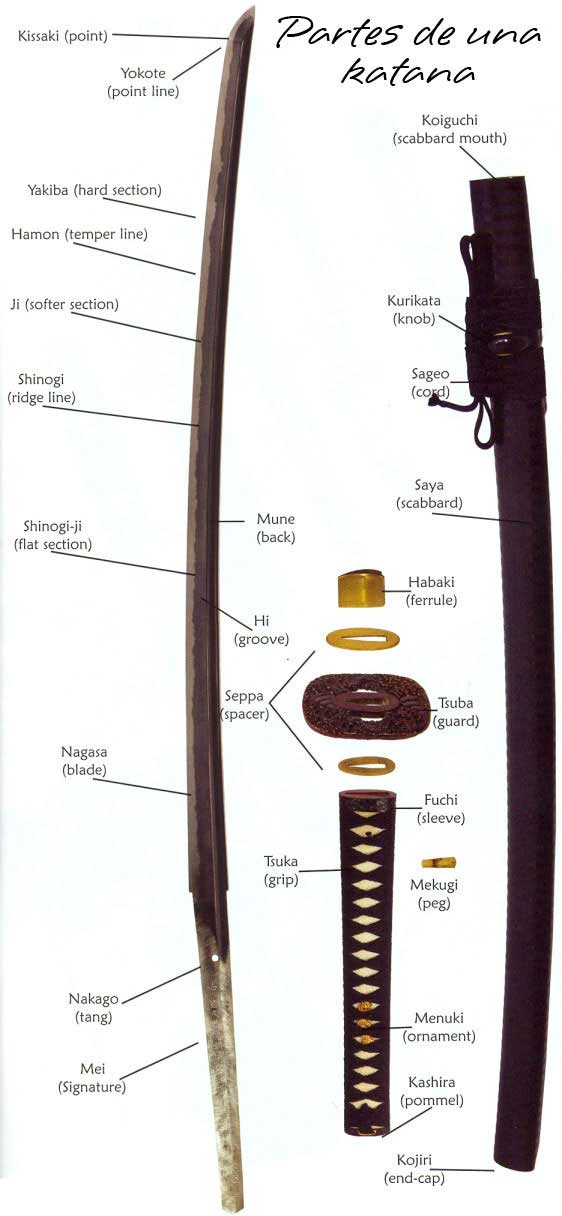What is Shinogi?
The Shinogi is a fundamental element in the construction of a katana, defined as the line that divides the blade into two faces: the front part (shinogi) and the back part (ura). This line is not only aesthetically pleasing but also plays a crucial role in the dynamics of cutting and the blade's durability. The design of the Shinogi is one of the features that distinguish each katana, reflecting the skills of the craftsman and the tradition of Japanese forging.
There are several classifications of Shinogi, each suited to different needs and fighting styles. Some of the most common forms include:
- Marudome: a rounded design that offers a smoother curve.
- Koshizori: a curved Shinogi that adds grace and efficiency to sword movement.
- Torii-zori: with a more aggressive profile, suitable for fast and aggressive cuts.
Each of these types of Shinogi influences the behavior of the katana during combat, as well as its handling style. For example, a Shinogi with a more pronounced curve may facilitate deeper, more effective cuts in certain techniques, while a straighter one provides stability and control.
Beyond its functionality, the Shinogi can also be a symbol of status and tradition. Many modern katanas feature Shinogi decorated with intricate engravings and motifs that represent the history and culture of their owner. This customization not only beautifies the sword but also seals the connection between the warrior and their heritage.
Maintaining the Shinogi is essential to preserving the effectiveness and longevity of the katana. To maintain its functionality and appearance, it is advisable to follow some care steps:
- Regularly clean the Shinogi to prevent dirt and residue buildup.
- Lubricate the area to prevent oxidation and corrosion, especially in humid climates.
- Protect the Shinogi from impacts and blows, as damage in this area can compromise the sword’s performance.

















